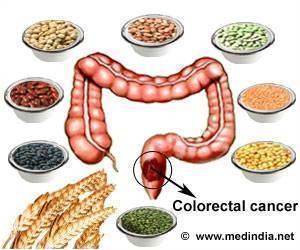Competing definitions of what whole grains actually are makes it difficult to evaluate the consumption among Americans
- Eating whole grains is an important part of a balanced diet
- Whole grains are known to reduce the risk of cardiovascular disease, diabetes, obesity, and cancer
- New research shows that while consumption of whole grains has gone up, what whole grains actually mean is conflicting
Trends in Whole-Grain Food Intake Among Adult Americans, Based on Different Definitions of Whole-Grain Foods, NHANES 2003-2018
Go to source).
Health benefits of dietary fiber
Go to source). The 2015–2020 Dietary Guidelines for Americans (DGA) noted that distinguishing whole grains from refined grains is especially important because Americans are currently consuming enough grains daily; however, over 40% are not consuming enough whole grains (3✔ ✔Trusted Source
Dietary Guidelines for Americans
Go to source).
The greatest sources of whole grains in the diets of adults are yeast breads (27%), ready-to-eat (RTE) cereals (23%), and pastas, cooked cereals, and rice (21%) (4✔ ✔Trusted Source
Ten-Year Trends in Fiber and Whole Grain Intakes and Food Sources for the United States Population: National Health and Nutrition Examination Survey 2001-2010
Go to source). However, those food sources are not generally 100% whole grains. The American diet does not include many foods that are 100% whole grains, but rather foods that contain some small proportion of whole grains, such as breads, cereals, or pastries made with some whole grain flour. The US Food and Drug Administrations’ classification of whole grains is limited to those products which retain all of the main biological components of the grain (germ, endosperm, and bran) in the same relative proportion as in the intact grain (5✔ ✔Trusted Source
Draft Guidance for Industry and FDA Staff: Whole Grain Label Statements
Go to source), which is not necessarily related to the amount of dietary fiber. Therefore, the “whole grain”-containing foods recommended by the DGA encompass a wide variety of foods, ranging from those with proportionally low amounts to those with very high amounts of dietary fiber, depending upon the type of grain.
The researchers say that there’s a clear need to standardize how consumers, researchers, and policymakers talk about whole-grain foods. The study compared overlapping definitions from five institutions: the Dietary Guidelines for Americans, the U.S. Food and Drug Administration (FDA), the American Heart Association, the American Association of Cereal Chemists International, and the Whole Grains Council. The research team applied the various definitions of a whole-grain food to the dietary intakes of over 39,700 adults captured by the National Health and Nutrition Examination Survey (NHANES) between 2003 and 2018.
Confusion Regarding Whole Grain Foods Definition
Researchers found that each definition captured very different types of grain- or flour-containing foods as whole-grain foods, resulting in differences in the average consumption of whole-grain foods and the associated trends. They also added that, as consumers, they have had the experience of struggling to identify what is or isn’t a whole-grain food via the packaging labels. Recent studies also suggest nearly half of American consumers have similar challenges (6✔ ✔Trusted SourceConsumer Confusion about Whole Grain Content and Healthfulness in Product Labels: A Discrete Choice Experiment and Comprehension Assessment
Go to source).
When looking at the different categories of whole-grain foods identified by these definitions, while some similarities were identified—whole-grain bread consumption increased under all definitions—there were more differences. The government-led FDA’s definition was the strictest, categorizing the fewest foods as whole-grain foods compared to the industry-led Whole Grains Council’s, which was the most lenient but could be the least healthy based on previous studies.
One surprising finding was how the foods of different population subgroups were classified depending on the applied definition. For example, individuals who are non-Hispanic white had a higher intake of whole-grain foods compared with other racial/ethnical groups under all definitions, except for the definition proposed by the American Heart Association, under which Hispanic individuals had the highest intake. The possible reason is that the American Heart Association’s definition is more sensitive to identifying dishes such as corn-based burritos, tacos, and nachos as whole-grain foods.
The definitions used to define whole grain foods affect the estimated mean and trends of whole grain foods consumed by US adults. This finding calls for a standard definition of whole grain foods across the nation to guide consumers and inform policy formulation to promote whole grain intake among Americans.
- Trends in Whole-Grain Food Intake Among Adult Americans, Based on Different Definitions of Whole-Grain Foods, NHANES 2003–2018 - (https://academic.oup.com/cdn/article/5/Supplement_2/1027/6292704)
- Health benefits of dietary fiber - (https://onlinelibrary.wiley.com/doi/10.1111/j.1753-4887.2009.00189.x)
- Dietary Guidelines for Americans - (https://health.gov/sites/default/files/2019-09/2015-2020_Dietary_Guidelines.pdf)
- Ten-Year Trends in Fiber and Whole Grain Intakes and Food Sources for the United States Population: National Health and Nutrition Examination Survey 2001–2010 - (https://www.ncbi.nlm.nih.gov/pmc/articles/PMC4344579/)
- Draft Guidance for Industry and FDA Staff: Whole Grain Label Statements - (https://www.fda.gov/regulatory-information/search-fda-guidance-documents/draft-guidance-industry-and-fda-staff-whole-grain-label-statements)
- Consumer Confusion about Whole Grain Content and Healthfulness in Product Labels: A Discrete Choice Experiment and Comprehension Assessment - (https://www.ncbi.nlm.nih.gov/pmc/articles/PMC8555857/)
Source-Medindia









